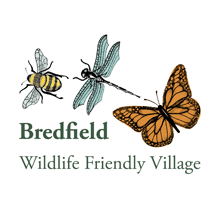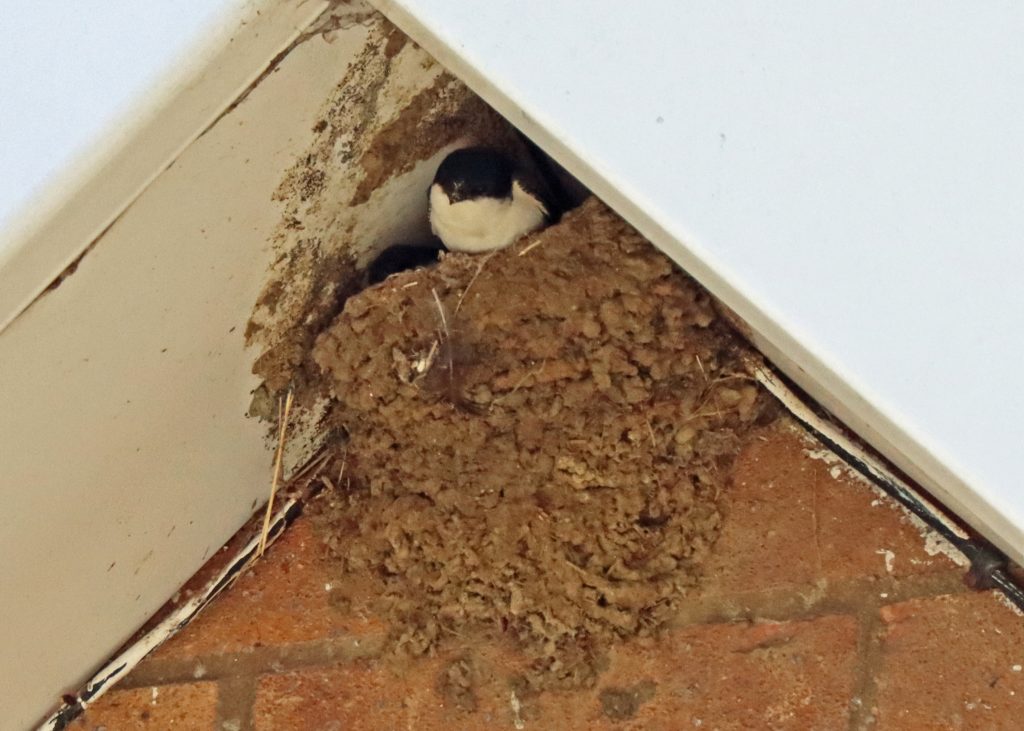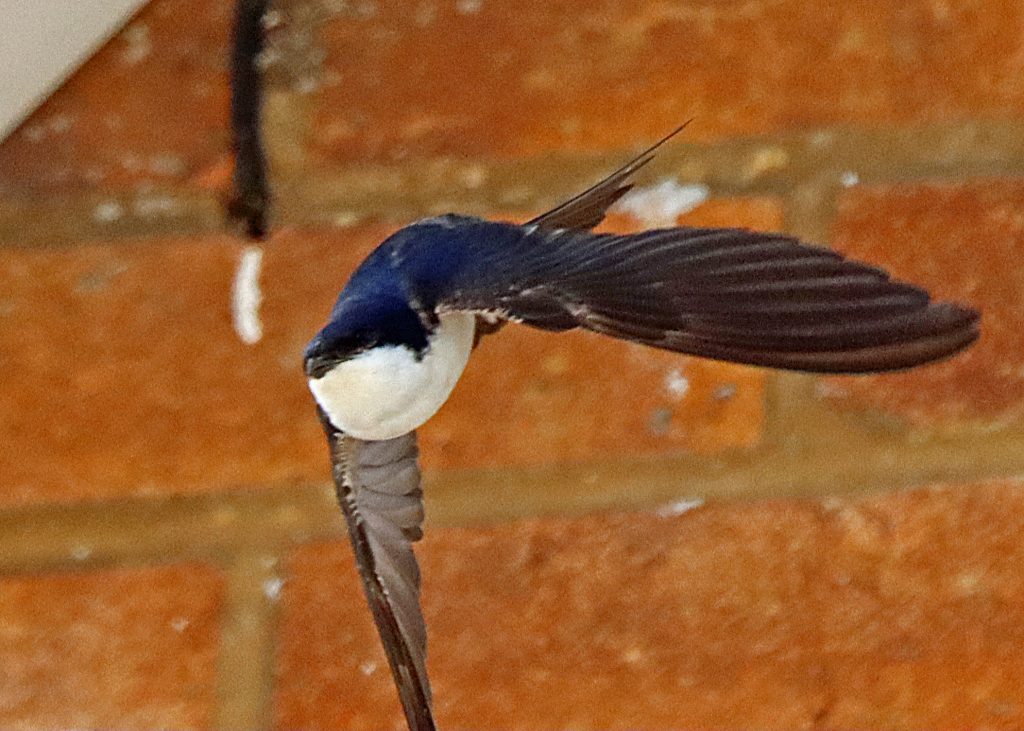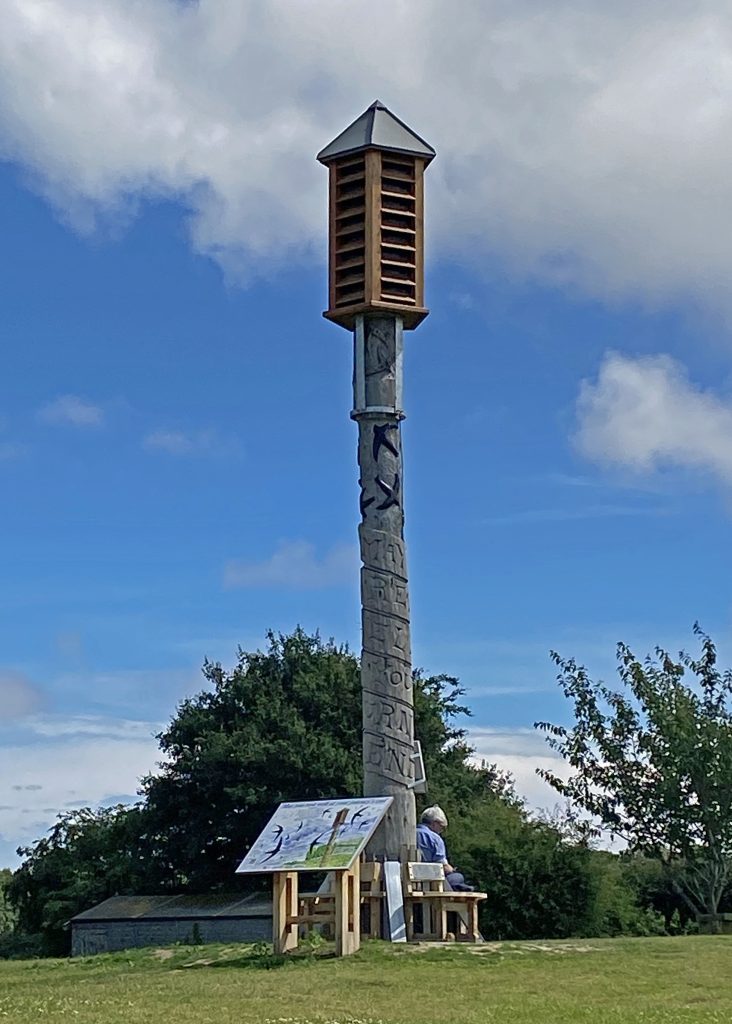In this feature article we’re going to look at two migrant birds that have come to rely on us for nest sites. Both are well-known and delight to have in the summer skies over Bredfield: the Swift and the House Martin.
These birds have evolved to make use of the man-made environment for their homes. Swifts, which don’t put much effort into nest-building, originally made their nest holes in cliff-faces. By contrast, House Martins put a lot of energy and creativity into building their nests: collecting mud in their beaks and, with enviable plastering skills, shaping this into a neat nest-bowl that adheres to the chosen nook. Again, the original location for these nest constructions would have been cliffs or banks. Both species have now evolved to use houses, churches and others buildings as their preferred nest sites.
Both of these species have suffered population declines. The main culprits are the usual suspects: seasonal disruption caused by climate change; and a decline in their food source – flying insects – caused by habitat loss and the use of pesticides. In addition, these two birds have suffered from a loss of suitable places to nest on buildings. Swifts squeeze into the smallest of cracks (under roof tiles, for example), but today these cracks are more likely to be filled or may be non-existent on new-builds. House Martins love to suspend their nests under overhanging eaves, but today many eves have smooth plastic soffits, to which mud adhere less-firmly and more precariously. In both cases, our understandable desire to have neat, maintenance-free houses has had an adverse impact on suitable nesting locations. However, humans are inventive and generally caring, so helping solutions for Swifts and House Martins are available. Later in this article, we will look at these solutions, but first let’s say a word or two about the birds themselves.
Swifts – wow! They lead an amazing life. After leaving the nest, a Swift will not land for a whole year, or even two. Everything – eating, sleeping and mating – is done on the wing. Their migrations involve thousands of miles of travel. They are the final summer visitor to arrive, and it lifts the spirits to see the first ones in May. No one has captured the moment of the Spring arrival of Swifts better than Ted Hughes:
They've made it again, Which means the globe's still working, the Creation's Still waking refreshed, our summer's Still all to come
House Martins are in the same family as Swallows, but nowhere-near related to Swifts. They arrive on our shores earlier and depart later. It easy to identify them: they are chubby and have a bright-white rump. By contrast, Swifts are sleeker with long sickle-shaped wings.
Now let’s return to their nesting. As a help for House Martins, artificial versions of House Martin nests are availed to buy and erect. My Bredfield neighbour has had House Martins nesting under his eaves for successive years, but last year the nest fell off his plastic soffits. This year he has erected a concrete simulation of the nest, and it has worked (see image). As I write, the parents are coming to-and-fro feeding youngsters in the nest.
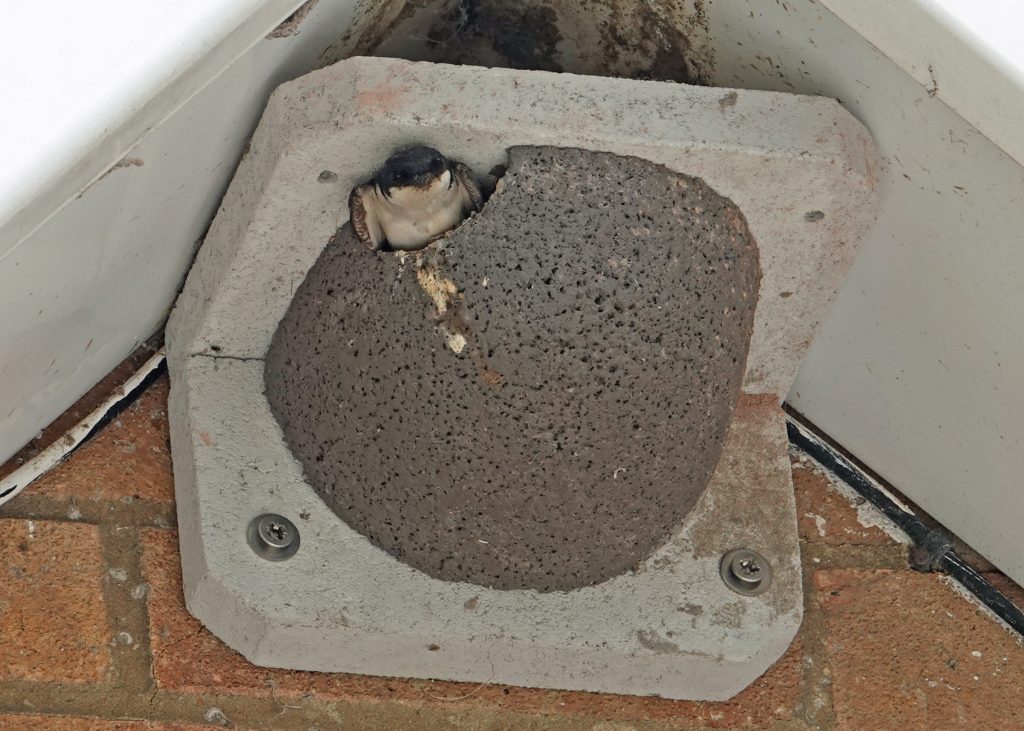
Artificial House Martin nest 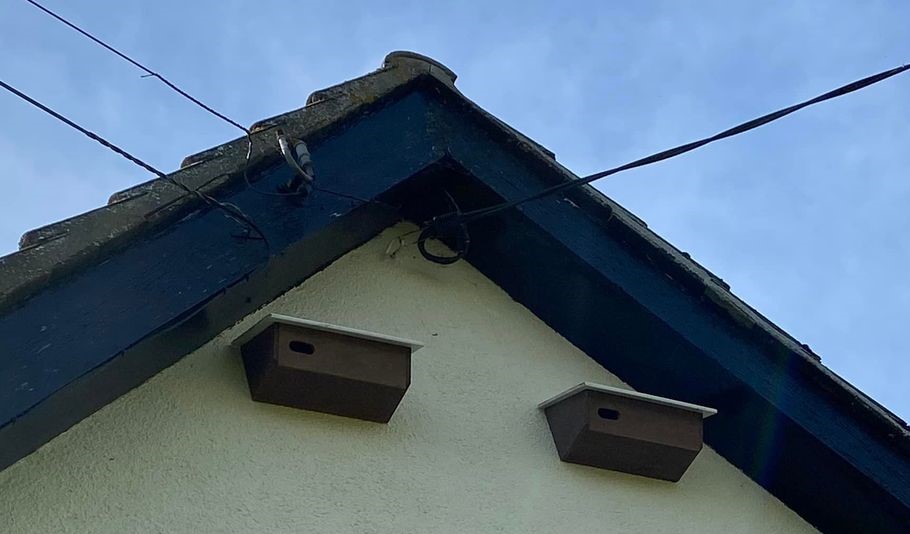
Swift nest boxes
Swift boxes, look rather more like other bird boxes (see image). They need to be set high on the wall, providing exiting fledglings with a clear flight. Swifts like to nest communally, so it is necessary to erect two or more boxes side-by-side. Getting Swifts to take to your new next box, isn’t straightforward. It helps if you can play a recording of their calls to trick them into thinking that other Swifts are nesting in the neighbourhood. I’m frustrated to report that the two Swift boxes that I erected on our house have yet to attract residents. Probably, I’ve just been unlucky. The boxes do work and many new-build houses include ‘nest bricks’ high on the end wall. Perhaps the most ambitious provision of Swift nest boxes is this ‘Swift Tower’ erected in the grounds of The Eel’s Foot pub in Eastbridge:
Swift Tower in Eastbridge, Suffolk – inspired and arranged by the late Steve Piotrowski.
Have a go at providing a home for Swifts and House Martins if you can. You don’t have to go as far as a Swift Tower in your back garden! Every little helps!
For more information, go to ‘Save our Suffolk Swifts’ and ‘House Martin Conservation.com’
All photographs by Stewart Belfield, and all taken in Bredfield with the exception of the Swift Tower. A version of this article has also appeared in the Bredfield Lantern.
